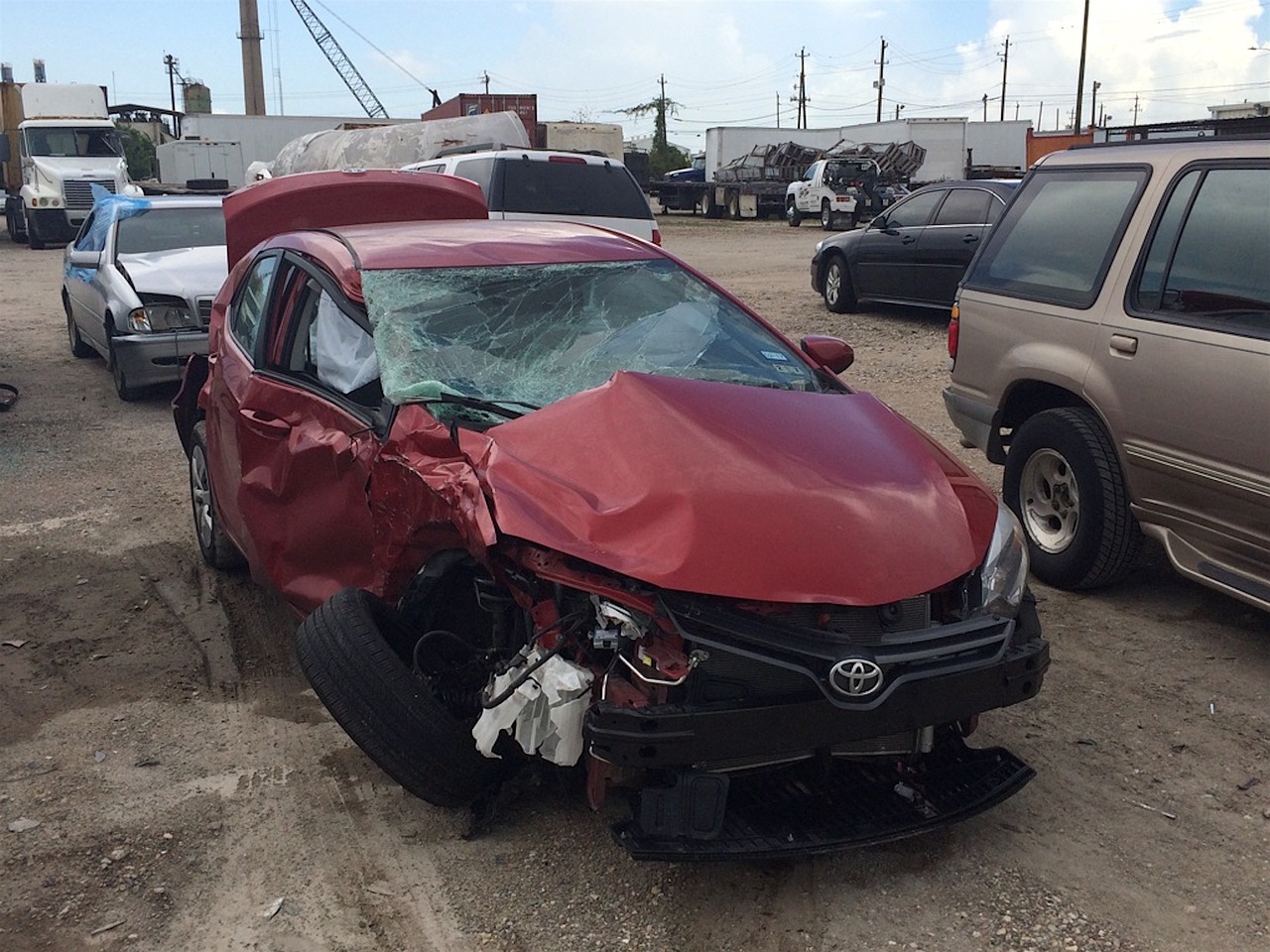Proving negligence in severe injury cases can be a daunting task, requiring expertise and strategic know-how. Our top tips from experts will guide you through the intricate process, contrasting common misconceptions with effective strategies. By understanding the nuances of negligence claims and the crucial elements required for a successful case, you can navigate the legal landscape with confidence. From gathering compelling evidence to establishing fault, our expert advice will empower you to present a strong case and seek rightful compensation. Stay tuned to uncover invaluable insights that can make a significant difference in your pursuit of justice.
Understanding Negligence
Defining Negligence
Negligence is a failure to act with reasonable care, leading to harm or injury to others in the eyes of the law. It involves not exercising the level of caution that a prudent person would in similar circumstances. This legal concept encompasses ordinary negligence, which refers to simple carelessness, and gross negligence, indicating a reckless disregard for others’ safety. In legal settings, negligence can result in civil liability, where the negligent party is held responsible for the damages caused.
Key Elements Of Negligence
Duty Of Care
- Duty of care signifies the legal obligation to prevent harm to others by taking reasonable precautions. It varies depending on the situation and profession, with professionals like doctors having a higher duty due to their expertise. Establishing a duty of care is crucial in negligence cases as it forms the basis for determining liability.
Breach Of Duty
- A breach of duty occurs when the responsible party fails to meet their obligation of care towards others. Factors like standard practices and specific circumstances are considered in determining whether a breach occurred. Proving breach is essential in establishing liability in negligence cases, showing that the defendant’s actions fell short of what was reasonably expected.
Causation
- Causation in negligence cases involves linking the breach of duty directly to the injuries suffered. It distinguishes between actual cause (the direct link between negligence and harm resulting in personal injury) and proximate cause (foreseeable consequences). Establishing causation is pivotal in proving that the defendant’s actions directly led to the plaintiff’s injuries.
Damages
- Damages in negligence cases encompass compensation for various losses, including medical expenses, lost wages, and pain and suffering. They serve to make the injured party whole by providing financial redress for their suffering. Assessing and quantifying damages involves evaluating the extent of harm suffered and calculating fair compensation based on legal principles.
Gross VS. Ordinary Negligence
Distinguishing gross negligence from ordinary negligence lies in the severity of the conduct; while ordinary negligence results from simple oversight, gross negligence involves extreme recklessness or conscious disregard for others’ safety. Legal repercussions for gross negligence are more severe, potentially leading to punitive damages aimed at punishing the negligent party for their egregious behavior.
Proving Negligence In Severe Injury Cases
Gathering Evidence
Collect relevant evidence to support your negligence claim. Utilize eyewitness accounts, medical records, and accident reports. Organize evidence systematically to strengthen your case. This can include photographs, videos, and expert opinions.
Working With Experts
Collaborate with experts such as medical professionals or accident reconstruction specialists. Their testimony can provide crucial insight into the standard of care and breach. Expert opinions carry weight in court and can bolster your case significantly.
Effective Documentation
Maintain thorough records of all communications and evidence related to your injury. Document medical treatments, expenses incurred, and the impacts on your daily life. Clear and detailed documentation is essential for building a strong legal case.
Persuasive Arguments
Develop compelling arguments to present your case effectively in court. Use logical reasoning supported by factual evidence to strengthen your claims. Anticipate potential counterarguments and prepare responses to reinforce your position.
Legal Considerations
Comparative Negligence
Comparative negligence plays a crucial role in determining compensation in injury cases. Analyzing fault distribution among parties is essential. The impact of comparative negligence on legal outcomes can be significant.
Statute Of Limitations
Understanding the statute of limitations is vital in negligence cases. Filing within the timeframe is crucial for a successful claim. Exceptions to the statute may apply, affecting the timeline.
Filing Deadlines
Negligence claims have specific deadlines for filing. Missing these deadlines can have serious consequences. Taking timely action is essential to protect legal rights.
Seeking Legal Help
Consulting with a specialized attorney is key in negligence cases. Professional guidance can enhance the legal process significantly. Evaluate attorneys based on experience and success rates.
Building A Strong Case
Best Practices
Implement best practices for building a strong negligence case. Conduct a thorough investigation to gather all relevant facts and evidence. Ensure that every aspect of the incident is meticulously documented for strong case preparation. Communicate clearly with your legal team and experts to align on the case strategy.
Evidence Preservation
Take immediate steps to preserve evidence following an incident. Secure any physical evidence, such as photographs or objects, that may support your case. Maintain digital records, including emails, messages, and any other electronic documentation related to the incident. Educate all involved parties about the critical importance of preserving evidence to strengthen the case.
Expert Witness Collaboration
Engage expert witnesses early in the preparation of your case. Collaborate closely with these experts to ensure their testimony aligns with your legal strategy. Provide them with all the necessary information and context to support your case effectively. Prepare the experts thoroughly for their court appearances to enhance their communication and credibility.
Court Presentation Tips
Practice presenting your case confidently and clearly in court. Logically organize all materials and evidence for easy reference during court proceedings. Utilize visual aids, such as diagrams or charts, to help the judge and jury better understand complex information. Presenting a well-structured and visually engaging case can significantly impact its reception in court.
Compensation For Victims
Types Of Compensation
Victims of negligence have various forms of compensation available, including economic and non-economic damages. Economic damages cover quantifiable losses like medical bills and lost wages, while non-economic damages address intangible harms such as pain and suffering. In severe cases, punitive damages may also be awarded to punish the at-fault party.
- Economic damages: Medical expenses, property damage, and lost income.
- Non-economic damages: Pain and suffering, emotional distress, and loss of enjoyment of life.
- Punitive damages: Awarded to deter the defendant from similar conduct in the future.
Calculating Damages
To calculate damages accurately, consider various factors such as medical costs, rehabilitation expenses, lost wages, and future earning capacity. Expert opinions play a crucial role in assessing the total damages incurred by the victim. Economic damages are straightforward to calculate based on actual financial losses, while non-economic damages require more subjective evaluation.
- Economic damages: Tangible losses that can be calculated precisely.
- Non-economic damages: Intangible losses that are more challenging to quantify accurately.
Claim Process
When filing a negligence claim, victims must follow specific steps to seek compensation for their injuries. It is essential to adhere to procedural requirements, such as filing deadlines and documentation submission. Moreover, victims should prepare for potential negotiations or settlement discussions with the at-fault party or their insurance company.
- Filing a claim: Submitting a formal complaint outlining the negligence and resulting damages.
- Procedural requirements: Meeting deadlines, gathering evidence, and complying with legal standards.
- Negotiations: Discuss settlement offers with the opposing party before considering litigation.
Maximizing Compensation
To maximize compensation in negligence cases, victims should gather comprehensive evidence to support their claims. Documentation such as medical records, witness statements, and expert testimonies can strengthen the case. While advocating for fair settlements through negotiation, victims should also be prepared for litigation if a satisfactory resolution cannot be reached outside of court.
- Comprehensive evidence: Medical records, photos of injuries, witness statements.
- Fair settlements: Negotiating with the at-fault party or their insurance provider for just compensation.
- Litigation preparation: Consulting with legal experts to prepare for court proceedings if needed.
Closing Thoughts
Negligence cases can be complex, but by understanding the key elements and legal considerations, you can build a strong case to prove your claim. Remember, the burden of proof lies with you, so thorough documentation and evidence are crucial. By following these expert tips, you can increase your chances of receiving fair compensation for your severe injury. Stay informed, seek legal advice if needed, and remember that your well-being is paramount. Your diligence and perseverance in proving negligence could make a significant difference in your case outcome.
Secure Your Recovery After A Severe Injury In Phoenix, Arizona With Phoenix Injury Attorneys
At Phoenix Injury Attorneys, we understand the profound impact that a severe injury can have on your life. Our experienced and compassionate legal team, based in Arizona, is dedicated to providing not only skilled legal representation but also genuine care and empathy. Specializing in severe injury cases in Phoenix and the surrounding areas, we recognize that addressing such a significant trauma involves more than just legal proceedings—it’s about restoring your peace of mind and securing your future. By choosing us, you’re not just hiring legal experts; you’re gaining a group of advocates who are deeply committed to your well-being and success.
Led by Khalil Chuck Saigh, our collaborative approach ensures that every client benefits from our collective expertise, making us a formidable force in the pursuit of your rights and compensation. We are committed to providing personalized attention and tirelessly working to achieve the best possible outcomes for our clients in Phoenix and throughout Arizona. Trust Phoenix Injury Attorneys to handle your severe injury case with the utmost care and professionalism, so you can focus on healing and moving forward with your life. Reach out to us today to learn more about how we can assist you through this challenging time.
Disclaimer
The materials available on this website are for informational and entertainment purposes only and not to provide legal advice. You should contact your attorney to obtain advice concerning any particular issue or problem. You should not act or refrain from acting based on any content included in this site without seeking legal or other professional advice. The information presented on this website may not reflect the most current plumbing developments. No action should be taken in reliance on the information contained on this website and we disclaim all liability concerning actions taken or not taken based on any or all of the contents of this site to the fullest extent permitted by law.


